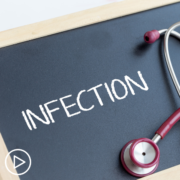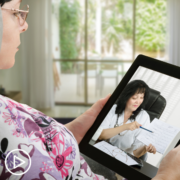Telemedicine Visit Preparation Tips From Myeloma Patients to Myeloma Patients
Telemedicine Visit Preparation Tips From Myeloma Patients to Myeloma Patients from Patient Empowerment Network on Vimeo.
With the pandemic altering our conventional communication methods, how can myeloma patients be prepared for upcoming telehealth appointments? Myeloma patients Barry Marcus and Honora Miller share their top tips for being as prepared as possible for a telemedicine visit.
See More From the Myeloma TelemEDucation Resource Center
Transcript:
Barry Marcus:
One of the virtues of it is that you can seek opinions from a wide geographic area, you don’t have to travel, some opinions that you might want to get could be thousands of miles away, and I didn’t feel when I had a telemedicine visit that was really much different than an in-person visit, we talked about the same things we would have had we been face-to-face, and I was very happy with it.
Honora Miller:
I’ve had quite a few telemedicine visits since the beginning of COVID, almost the entirety of my myeloma specialist visits have been via telemedicine. And I don’t have to drive an hour and a half to get there. My doctor is on time. We have the same conversation we would have had in person, and it’s very efficient, I come with my list, and it’s very efficient. I do see my local oncologist via in-person every other month so that they can lay their hands on me, and that seems to be sufficient, but every other month, just before my infusion, I’ll have a telemedicine visit with the oncologist and that’ll be sufficient and it’s cut down on a lot of anxiety around COVID.
Barry Marcus:
I would definitely recommend having, as you mentioned, a list of questions before you initiate the meeting, and think about what you really want to get from the meeting, and then review your list maybe towards the end and make sure that you have gone over the things that you wanted to talk about.
Honora Miller:
Agreed, I feel that it helps focus the conversation, and then you just know you’ve covered everything that’s concerned to you.















